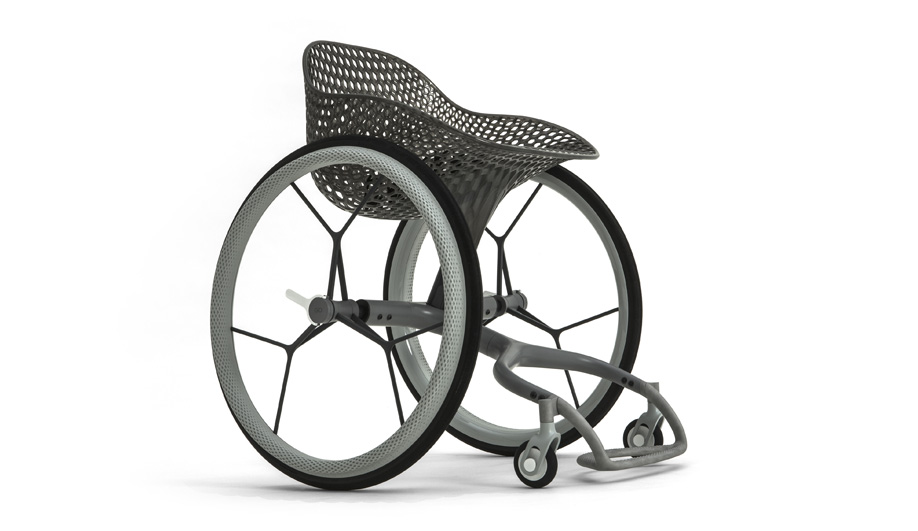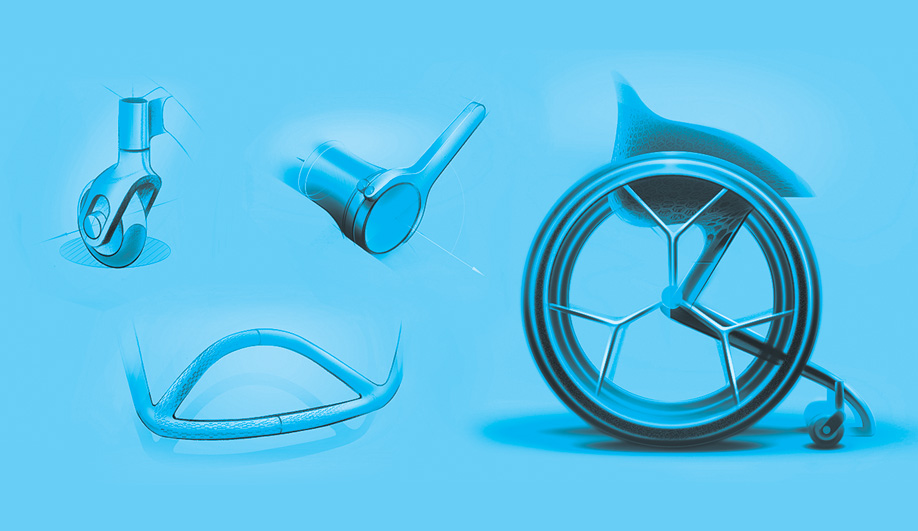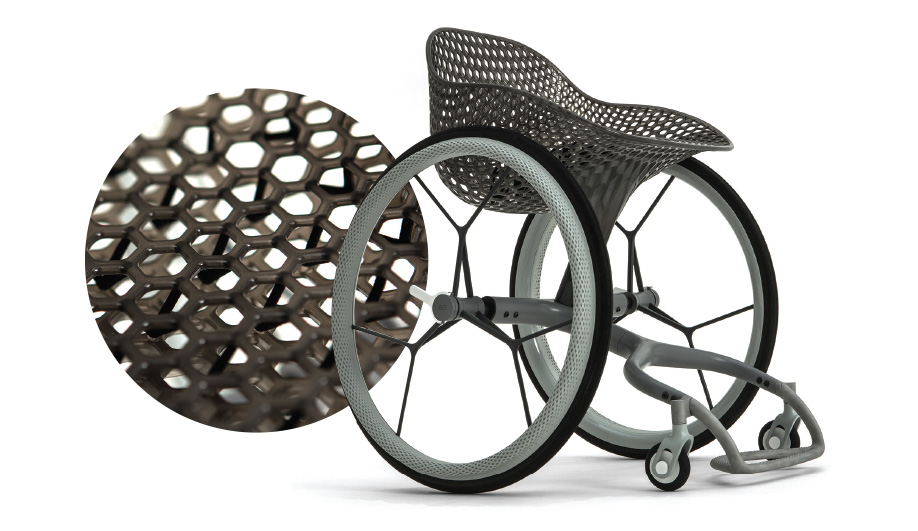
London design studio Layer rolls out a 3–D-printed wheelchair that is made to measure.

“This was an obvious one for us to rethink,” says Benjamin Hubert, director of Layer, the London studio known for its human-focused designs. “You constantly see people struggling to get around with wheelchairs.” The human body is not designed to self-propel from a seated position; when a wheelchair isn’t tailored to its user any more precisely than small, medium or large, they cause injuries – repetitive strains, sores, arthritis. “You need something that is more like an extension of your body,” Hubert says. The Go wheelchair, with its made-to-measure, 3–D-printed seat and footrest, is just that – a second skin.

The fitting process is a bit like getting a pair of glasses: a full-body scan of the user collects data to formulate a biometric prescription that can be filled online. “We didn’t start with the idea of doing a 3–D-printed project, but it provided the right solution,” says Hubert. The manufacturing process allows form, weight, and even sitting habits to shape each seat. Every unit has a unique centre of gravity and is made from a combination of resins and a honeycomb lattice that provides optimal shock absorption. To reduce shoulder strain, Hubert paired “super-grippy tactile push rims” with sporty silicone gloves. “It’s all about delivering a better power-to-push ratio.”

Go is still a prototype, but interest is pouring in; Layer has received dozens of emotionally charged messages from wheelchair users each day since unveiling the concept in May. If it becomes a reality, a custom wheelchair could be ordered and delivered in as little as two weeks. Users would specify options such as assisted push bars, transfer bars (for moving from the chair into bed or a car) and wheel guards. The personalization wouldn’t end with practicalities. “It may sound a bit trite, but our research tells us that a massive frustration for people using wheelchairs up to 18 hours a day is that they don’t express personality, youthfulness or point of view,” says Hubert of his plans to make different colourways available. “If you can do it with your sneakers, why can’t you do it with your wheelchair?”
